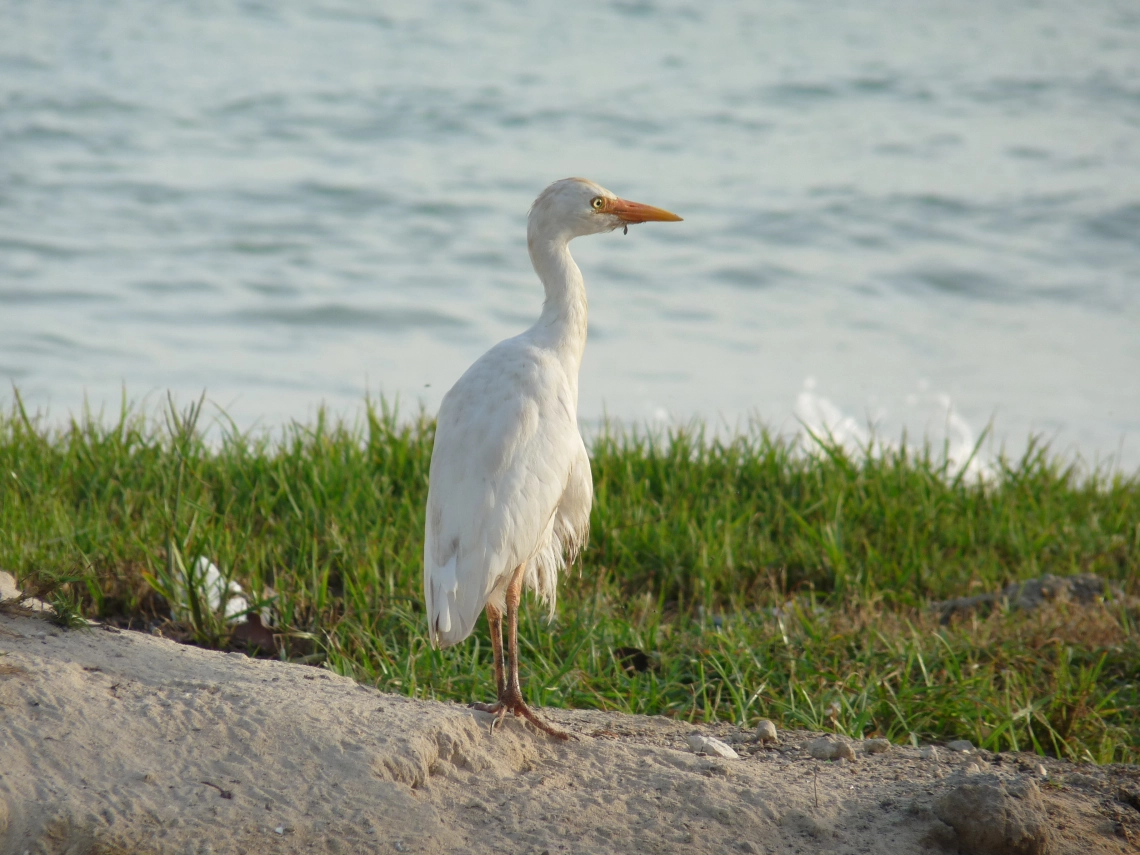Cattle Egrets and Hamburgers
By Safina Center Senior Fellow Jacqueline L. Scott
Cattle egrets are expanding their range across the globe, following the increase of cattle farming. ©Jacqueline L. Scott
If Cattle Egrets could talk, I would like to interview them about their relationship to cows. I see lots of Cattle Egrets on my birding walks in Toronto. The compact heron’s range has expanded across the globe in the last 100 years, and they are now found on most continents. The birds flew there on their own. They are obviously great flyers, but it was the availability of food that drew them across the Atlantic Ocean.
The scientific name for the Cattle Egret is Bubulcus ibis. The tropical birds are native to Africa, and to southern Asia and Europe. They flew from Africa to the Caribbean in the last century, and then from there to the American mainland. Such long-range flights are typical of the species. As cows expanded across the globe, so did the Cattle Egrets.
We turn cows into hamburgers and steaks, milk and cheese, and leather. Hamburgers are part of the North American diet, yet it has become a universal symbol of modernity and globalization, and stripped of its specific cultural origins. The demand for hamburgers means more cows, which means more Cattle Egrets. Cows first came to the Americas in 1492.
The medium sized herons are white with pale orange beaks. I have seen them perched upright on the backs of cows. Other times they wander around, neck hunched into their shoulders like cold people in winter.
Unlike other herons, Cattle Egrets are not tied to water or marshes. They are field and grassland birds who follow cattle for an easy meal, eating the insects stirred up by the hooves, as well as the ticks and flies on the cows. The cattle seem to like having this clean-up crew around.
The Amazon rainforest is being clear-cut for cattle ranching, which is responsible for most of the deforestation. This means more Cattle Egrets in the area. Who would have thought that the love of cheap beef is making the planet sick? Here’s another way of looking at this - the range expansion of the birds is tied to the expansion of ecological colonialism.
Due to the climate crisis the range of birds is moving north or uphill. Not all species can adapt fast enough to these human-created changes. The Cattle Egrets are adapting, but their presence on my birdwatching strolls in Toronto, is both beauty and an omen.
Bio
Jacqueline L. Scott is a scholar, writer and activist on race and nature. She is a PhD candidate at the University of Toronto.

